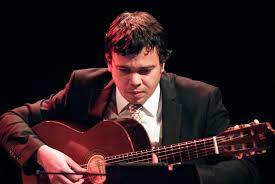Versatility in the Dutch Speaking Caribbean
Welcome to the Dutch Caribbean! As mentioned in Tour de Force by Christine Ganglehoff and Cathleen LeGrand, the Dutch Caribbean consists of the Windward Islands also known as SSS. SSS stands for Saba, Sint Eustatius and Sint Maarten. There are also the Dutch Leeward islands also known as the ABC islands. These islands are Aruba, Bonaire, and Curacao. The focus of this blog will be on the ABC islands. The Dutch Leeward islands' musical history centers around the tambu, a drum instrument, and instruments that were made from farm tools or any items that could be constructed to play music. Most of those instruments were "percussive in nature, made from discarded metal implements" (Ganglehoff & LeGrand, 2019). The ability of the people, from the ABC islands, to transform everyday tools to make music was ingenious and it shows in the versatility of the artists that hailed from those islands. One such artist is Juan Chabaya Lampe who was also called Padu del Caribe. According to Tour de Force, Lampe was "a pianist and well-known composer. He is also a singer and poet and, in addition to piano, plays cuatro, mandolin, and clarinet" ( Ganglehoff & LeGrand, 2019). Juan Lampe along with his close friend Rufo Weber composed Aruba Dushi Tera, Aruba's national anthem since 1976. Below is a photo of Juan Chabaya Lampe.
Photo provided by Aruba Hotel and Tourism Association via Facebook, 2019.
Below is one of Padu del Caribe's songs Abo So. Listen carefully to the exchange between the piano and the maracas. You can also hear the Spanish influence in the instruments being played along with the lyrics that Lampe is singing.
Licensed to YouTube by
The following video Santa Electra by Kuenta i Tambu showcases Calister's talent. The video begins with a woman, seemingly an elder, singing a chant-like song to a group of young women and men. The woman and the girls portray a call and response dynamic throughout the video. The dancers also are intuned with the rhythms being played on the tambu drum. After the woman sings for about a minute, there is an electronic switch in the beat in which you can now hear the tambu drums begin to fuse with the electronic beat. I felt like this song perfectly displays the purpose of Calister's tambutronic music. Enjoy the video below.
Music by Kuenta i Tambu. Video provided by YouTube.
Another artist from Curacao of notable mention is Jean Jacques Rojer he was born in 1976 to Robert Rojer. As a child, Jean Jacques Rojer "studied piano with his father and Wim Statius Muller" (Ganglehoff & LeGrand, 2019). His primary instrument is the guitar in which his genres of specialty are jazz and Caribbean music. The following image is that of Jean Jacques Rojer.
Photo Courtesy of the Caraibisch Uitzicht.
The following video showcases Jean Jacques Rojer's talent on the guitar. The simplicity of the song combined with the light strokes of the guitar and the slow tempo produces a soft almost serene feeling to the music. Rojer's guitar playing is also accompanied by a gentleman beating on a vase, providing the percussion effect that flows seamlessly with the strokes of the guitar. The old-fashioned beating on the vase also reminds me of what I would imagine native individuals did when they wanted to create instruments.
I hope you enjoyed this week's blog on the versatility of the Dutch Caribbean. I look forward to you reading my blog next time when we discuss the Spanish Caribbean.






Comments
Post a Comment